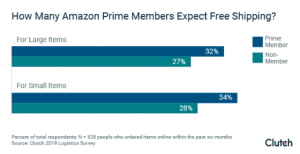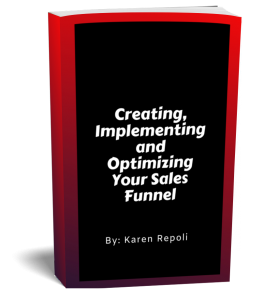— June 11, 2019
An introduction might not be the most informative part of your inbound marketing blog article, but it might just be the most important.
On average, Americans spend just 16.8 minutes per day reading for leisure. Although some inbound marketing content might entail more business-related reading, you’re still competing for your distracted persona’s attention. In fact, the average person spends just 37 seconds on a webpage—and good luck getting them to scroll down. On top of that, people are increasingly bombarded on their smartphones and desktops with notifications featuring articles from social media feeds, websites, apps, and a gazillion other channels.
The time put into researching, writing, optimizing, and promoting an inbound marketing blog article can pay dividends—but only if you get the reader to engage with the content. The introduction, or lead, to your article offers the best way to secure that engagement and keep readers on your page for more than 37 seconds.
Yet, many marketers struggle with leads, often ending up with an intro that isn’t compelling, talks down to the reader, or is just plain hokey. Mastering the lead helps ensure your thought leadership and marketing strategy shine throughout the rest of the article.
Why the Intro Matters
So, why bother with an introduction if it might not even be read? For starters, not everybody is so quick to scroll—many people will read an article from start to finish. However, these same diligent readers could lose their enthusiasm and click away if you don’t give them a reason to continue. A good intro draws blog visitors in, so that even if they don’t read every word of the article, they’re scrolling further down the page, possibly experiencing more of your thought leadership, and being exposed to calls to action.
For marketers, the intro also provides the basis to promote the article on other channels, from email to social media to paid to your own website. Consider what is more impactful in a social media posting: a few words rehashing the title or a descriptive synopsis based on the lead of the article?
Finally, your blog article should be more than just a post—it should tell a story and entertain. If your article lacks a compelling introduction, it won’t feel much like a story as it will a term paper. Starting strong sets up the rest of your story for success.
The Setup
There’s no one right way to write an introduction to an inbound marketing blog. I like using the following framework for writing introductions, which I find provides a quick, thorough setup to get the reader to the guts of the narrative:
- Something interesting that will catch the reader’s attention (more on this soon) or speaks to the problem the reader is experiencing
- A paragraph or so detailing the topic of the article and how it ties in to the interesting information that launches the post
- An explanation of the importance of the article’s topic and the problem the reader may be experiencing, thereby setting up the rest of the post
If you look at my introduction for this article, I open with the struggle to engage readers, reinforce why a great lead is important, and set up the problem and hint at the solution that the post will provide.
Of course, not every lead will need—or be able to follow—this framework. Consider:
- Straight news articles and buzzworthy pieces might require a more traditional lead like you would see in a newspaper or from an online news source.
- Q&A posts usually work best with some sort of introduction of the interview subject and why that person is important.
- Some topics need explanation right away before you can deliver thought leadership about them.
- Other topics lend themselves to more out-of-the-box creativity with the intro.
How you get to a compelling lead isn’t as important as simply arriving at your destination.
The Power of a Great External Reference
I’m a big believer in supporting a blog article intro with an interesting fact, statistic, quote, news story, or any other external reference you can bring in to pique the reader’s interest and reinforce your message. For example, if you’re writing about cybersecurity for a non-IT persona, a stat about how many organizations are burned by phishing attacks may capture the reader’s attention, creating a sense of urgency and prompting the reader to continue reading to uncover the solution to the problem.
So how directly pertinent should your reference be? After all, you might not be able to find the exact stat or factoid that drives your argument home—but you might be able to get close enough to intrigue the reader and then tie it to the rest of your article.
In our cybersecurity example, if you can’t find a relevant, timely stat about phishing attacks, but you can find the number of people who use email daily, you might be able to deftly weave a narrative about how, out of all these users, a few are bound to open a phishing email. Making such a connection isn’t always easy, so if it’s not working, don’t try forcing it. Also, be sure to properly cite and link your references.
Be Thorough but Succinct
A great introduction draws and immerses the reader into the world the blog article has built. Although you don’t need to be in a literary hurry to pull this off, you do need to take care not to go overboard with your word count. I’m the first to admit that I will occasionally go overboard on my intros (shocking, I know!); the challenge emerges when you want to get so much in to launch the rest of the article, but then write so much that the launch fails.
The setup framework I mentioned earlier keeps the intro to a few paragraphs, but you can easily write a shorter intro if necessary. If you have five great stats that are extending your intro, find room for some deeper into the article. And if you feel like you need an in-depth explanation to get the article going, consider revising your outline to shift that information to follow the intro.
Don’t make the reader put in a lot of work just to get to the first sub-header. Be thorough, but choose wisely where you will be thorough.
When in Doubt …
I started my professional career in the sports department of a big daily newspaper, and if you are familiar with sportswriting, creative leads are almost a requirement for all articles except for the most basic recaps and short news items. This created a fair amount of pressure for a young journalist trying to be clever and entertaining for a couple hundred thousand potential readers (back when people still read newspapers …). And, occasionally, my leads fell flat, once leading to one of my editors giving me advice I’ll never forget: Sometimes, you just need to be direct.
The assistant sports editor’s tip was meant to help on deadline—you can’t waste time on a lead that might suck anyway—but it also applies to inbound marketing blog articles. If you’re struggling to come up with a good intro, you’re better off getting to the point on what the article is about and why the reader should care than attempting a narrative or a statistic that you can’t support.
This doesn’t mean oversimplifying, such as, “We have thought leadership; here it is!” You can entice the reader by being direct and descriptive. Just don’t force the issue.
Digital & Social Articles on Business 2 Community
(62)
Report Post





